Schneider MTN6503-0201 Handleiding
Schneider
Niet gecategoriseerd
MTN6503-0201
Bekijk gratis de handleiding van Schneider MTN6503-0201 (11 pagina’s), behorend tot de categorie Niet gecategoriseerd. Deze gids werd als nuttig beoordeeld door 276 mensen en kreeg gemiddeld 4.9 sterren uit 138.5 reviews. Heb je een vraag over Schneider MTN6503-0201 of wil je andere gebruikers van dit product iets vragen? Stel een vraag
Pagina 1/11

© 2013 Schneider Electric 1
Metering Gateway Modbus REG-K
MTN6503-0201
Application Metering Gateway 7602/1.0
Metering Gateway Modbus REG-K MTN6503-0201© Me rten 200902/13
|Many parameters and their settings are depend-
ent on the settings you have already made for oth-
er parameters. This means that some parameters
will appear or disappear and the values available
for selection will change according to settings you
have already made. These dependencies have
not been shown in the table for reasons of clarity.
All settings are always shown.
|Configurable times are set via the base and factor
parameters. The actual time is given by the multi-
plication of the two values. Example:
Base = 1 second, Factor = 3
Actual time = 3 seconds
|The bold values in a table are the values set dur-
ing factory configuration.
Table of contents
The KNX Metering Gateway is a device which connects
meters via the Modbus open standard to KNX. The
Modbus open standard allows you to receive a more in-
depth analysis of consumption in all areas of your build-
ing.
You can connect up to 10 of the following types of me-
ters based on Modbus remote terminal unit (RTU):
• Schneider Electric energy meters
• Schneider Electric power meters
• Schneider Electric Smart Interface Modules (SIM10M
module)
• Non-Schneider Electric Modbus RTU devices (offer-
ing you greater flexibility)
With the information which the KNX Metering Gateway
provides you can visualise energy or media consump-
tion. This can also be used to reduce consumption
through the use of control strategies within the KNX net-
work.
You can choose from 17 different pre-prepared tem-
plates for the meters and devices in order to quickly
connect to a KNX network. Each template contains the
20 most frequently needed Modbus values for simple
configuration.
From each connected Modbus RTU device the KNX
Metering Gateway can read up to an additional 40 Mod-
bus register values and transfer this data to the KNX
network.
You can read up to 10 meters using one KNX Metering
gateway. This makes the Gateway very cost-efficient.
Integrating a SIM10 module makes it possible to deter-
mine and visualise gas and water consumption.
The KNX Metering Gateway is also suitable for retrofit-
ting or for retroactive connection of existing Modbus
systems to KNX because it is fully compatible with me-
ters from other manufacturers.
The application is influenced by the following events:
• ETS download
• Bus voltage failure
• Bus voltage recovery
The behaviour differs according to function and can in-
fluence the measuring and monitoring function. There-
fore, you can set the behaviour using parameters at the
corresponding point. Refer to the chapter in question
for a precise description.
Application Metering Gateway 7602/1.0
• Function overview 1
• Behaviour of the application 1
• Modbus settings 2
• Metering device templates 3
– Metering device x 3
– Voltage and current monitor 4
– Power monitor 4
– Consumption monitor 5
– Template for SIM10M module 6
• Direct access to Modbus register 7
– Access to register X 7
– Modbus register X 7
• Diagnostic block 8
• Overview of parameters 9
• Overview of communication objects 11
Function overview
Behaviour of the application

2 © 2013 Schneider Electric
Metering Gateway Modbus REG-K
MTN6503-0201
Modbus settings
The gateway always works in master mode and the
connected Modbus devices work in slave mode. Com-
munication from KNX bus to the Modbus is not possi-
ble.
Baudrate setting
The Baudrate is set depending on the distance be-
tween Modbus RTU devices. For instance with a Baud
rate of 9,600 bit/sec the maximum communication dis-
tance between 1 - 15 Modbus RTU devices is 1,200
metres. With the Baud rate of 19,200 bit/sec the maxi-
mum communication distance is 900 metres, as the ta-
ble shows below:
Parity refers to the technique of checking if transmis-
sion has been successful when transmitting between
devices. It lets you know if some data has been lost dur-
ing transmission.
Setting of parity
The Modbus supports only 11 bit frames. The ETS ap-
plication sets stop bits automatically depending on the
parity setting. "Parity" refers to the number of 1s in a giv-
en binary number. Odd parity means there are an odd
number of 1s and even parity means that there are an
even number of 1s. Parity bits are used as a means of
error detection as digital data is transmitted and re-
ceived. Both the Gateway and Meter must always be set
to the same as one another, odd, even or none. The de-
fault parity mode of Modbus is "even" parity.
|Make sure that all connected meters are always
set to the same parity as one another, odd, even or
one.
• Parity = None: choose between one and two stop bits
• Parity = Even: one stop bit is set
• Parity = Odd: one stop bit is set
|When parity is set to „None“ it is necessary to pre-
set meters PM2x0, PM7x0 and PM8x0 to one stop
bit (all other meters require a setting of two stop
bits here). This means that under „None“ parity
PM2x0, Pm7x0 and PM8x0 meters cannot be
combined with other meters. In their case it is nec-
essary to work with „Odd“ or „Even“ parity.
Parameters
Delay between frames
Some devices require considerable time after end of re-
sponse until they are ready to receive the following re-
quest from the master. In particular Schneider Electric
SEPAM power devices and legacy slave devices. As
they are slow in dealing with the original request they
may miss the following request.
The time between requests should be less than 3.5
characters according to the Modbus specification.
However, these legacy devices need more time. The
parameter „Delay between frames“ solves this problem.
The time is automatically adapted to 3.5 characters of
the transmission speed, but you have the choice to in-
crease this time if you need to support such slow legacy
devices.
Parameters
Start-up delay
The parameter „Start-up delay“ specifies from what
point measured values are counted in the application.
After an ETS download or bus voltage recovery, the de-
vice starts measuring the connected channels when
the start-up delay is complete.
Parameters
Modbus settings
Baudrate setting Maximum communication
distance for 1 to 15 Modbus
RTU devices
(Typical with Belden 3105A
cables)
9,600 bit/sec 1,200 m
19,200 bit/sec 900 m
Modbus settings
Parameters Setting
Baudrate setting (bit/sec) 1,200
2,400
4,800
9,600
19,200
Parity None
Even
Odd
Stop bit One stop bit
Two stop bits
Modbus settings
Parameters Setting
Delay between frames
1 ms* factor (50 .. 100)
Disabled
50 - 100 adjustable in steps of 10
Modbus Settings
Parameters Setting
Start-up delay
1 s * factor (1-250)
5
adjustable in single steps

© 2013 Schneider Electric 3
Metering Gateway Modbus REG-K
MTN6503-0201
Metering device templates
Pre-installed ETS templates provide you with the 20
most frequently needed values which makes configura-
tion much easier and quicker. This also means there is
no need to map the Modbus register addresses to KNX.
The ETS application has special templates which you
use to implement the Schneider Electric Modbus RTU
based energy or power meters and SIM10M module.
These devices are outlined in the table below:
Metering device x
You can select the metering device you require from the
parameter „Type of metering device“. These are the 17
devices from the previous table.
Each connected device has a unique address, between
1 and 247, as per the Modbus addressing protocol. To
identify the device, you need to set its address at the
parameter „Address of metering device“.
The template allows you to to monitor different kinds of
values. To achieve this it has three monitoring functions
which you can enable by parameter. These are:
• „Voltage and current monitor“
• „Power monitor“
• „Consumption monitor“
With the parameter „Sending behaviour“ you can spec-
ify how all values of the monitors are sent. For a cyclical
sending, you can set the parameter „Time base“ to ei-
ther 1 second or 1 minute. The chosen setting applies
to all values of the whole template.
Parameters
Metering device templates
Supported devic-
es
Type Name Description
Energy/power meter PM9C power meter for the installation
distributor (cabinet) for measure-
ment with current transformers
Energy/power meter PM210 current, voltage, power and ener-
gy (each active/idle/apparent),
frequency and power factor
Energy/power meter PM710 slave pointer (min/max), Total
Harmonic Distortion (THD) I/THD
U harmonic distortion
Energy/power meter PM750 like PM710 with alarm contact
Energy/power meter PM810 like PM750 with 4-quadrant
measurement
Energy/power meter PM820 like PM810 with additional inte-
grated memory for logging events
and analysis of harmonics.
Energy/power meter PM850 like PM810 with harmonic content
Energy/power meter PM870 like PM850 with additional detec-
tion and logging of peaks of volt-
age and current
Energy/power meter PM1200 like PM210 withTHD I/THD U har-
monic distortion
Energy/power meter DM6200 Ampere, volt, frequency meter
Energy/power meter iEM3150 direct measurement to 63A,
records energy
Energy/power meter iEM3155 like iEM3150 with alarm contact,
MID compliant
Energy/power meter iEM3250 transformer measurement
Energy/power meter iEM3255 like IEM3250 with alarm contact,
MID compliant
Energy/power meter PM3250 4-quadrant measurement, THD I/
THD U harmonic distortion
Energy/power meter PM3255 like PM3250 with alarm
Smart Interface
Module
SIM10M input module for pulse counting.
Metering device x
Parameters Setting
Type of metering device Disabled
PM9C
PM210
PM710/PM750
PM8x0
DM1200
DM6200
iEM3150
iEM3155
iEM3250
iEM3255
PM3250/PM3255
SIM10M
Address of metering device 1 ..247
Read Modbus values after start Enabled
Disabled
Voltage and current monitor Enabled
Disabled
Power monitor Enabled
Disabled
Consumption monitor Enabled
Disabled
Sending behaviour Cyclically (as configured
time)
If value was changed
Time base 1 sec
1 min
Product specificaties
| Merk: | Schneider |
| Categorie: | Niet gecategoriseerd |
| Model: | MTN6503-0201 |
Heb je hulp nodig?
Als je hulp nodig hebt met Schneider MTN6503-0201 stel dan hieronder een vraag en andere gebruikers zullen je antwoorden
Handleiding Niet gecategoriseerd Schneider
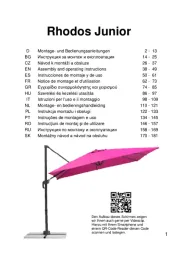
2 September 2025
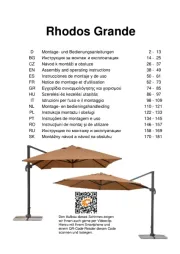
1 September 2025
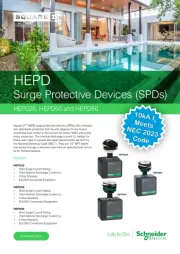
11 Augustus 2025
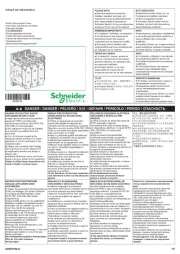
6 Juli 2025
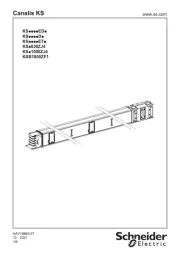
6 Juli 2025
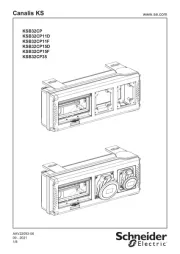
6 Juli 2025
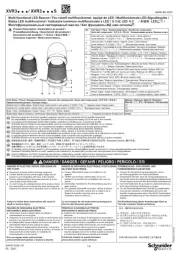
6 Juli 2025
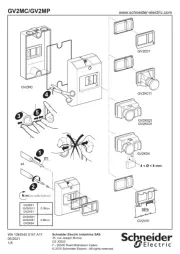
5 Juli 2025
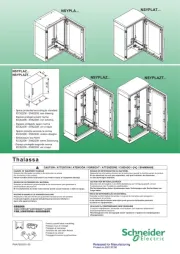
5 Juli 2025
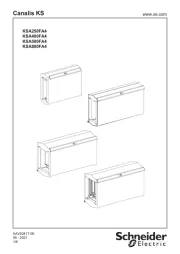
5 Juli 2025
Handleiding Niet gecategoriseerd
- Intergas
- KJB Security Products
- Globalo
- Schaudt
- Duronic
- Newline
- Harvia
- Artec
- Ebro
- I-Tec
- Liftmaster
- BOB Gear
- Smile
- Proctor Silex
- Stanley
Nieuwste handleidingen voor Niet gecategoriseerd
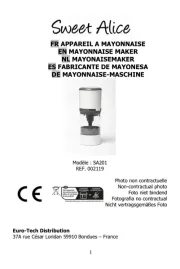
15 September 2025

15 September 2025
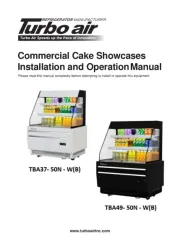
15 September 2025
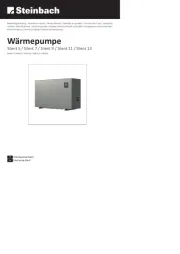
15 September 2025
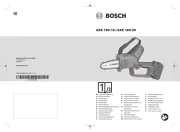
15 September 2025
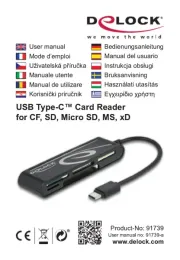
15 September 2025

15 September 2025
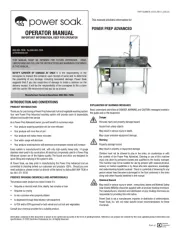
15 September 2025
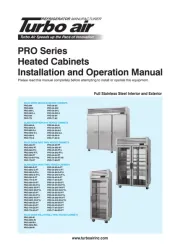
15 September 2025
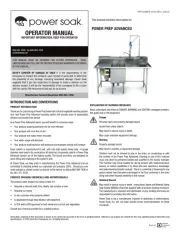
15 September 2025